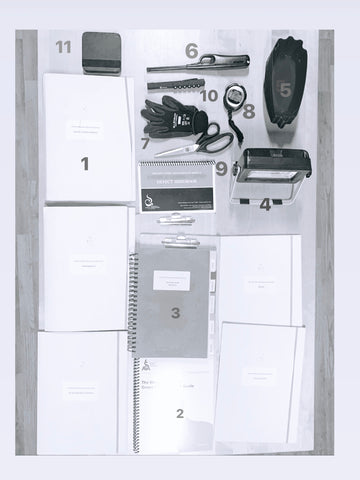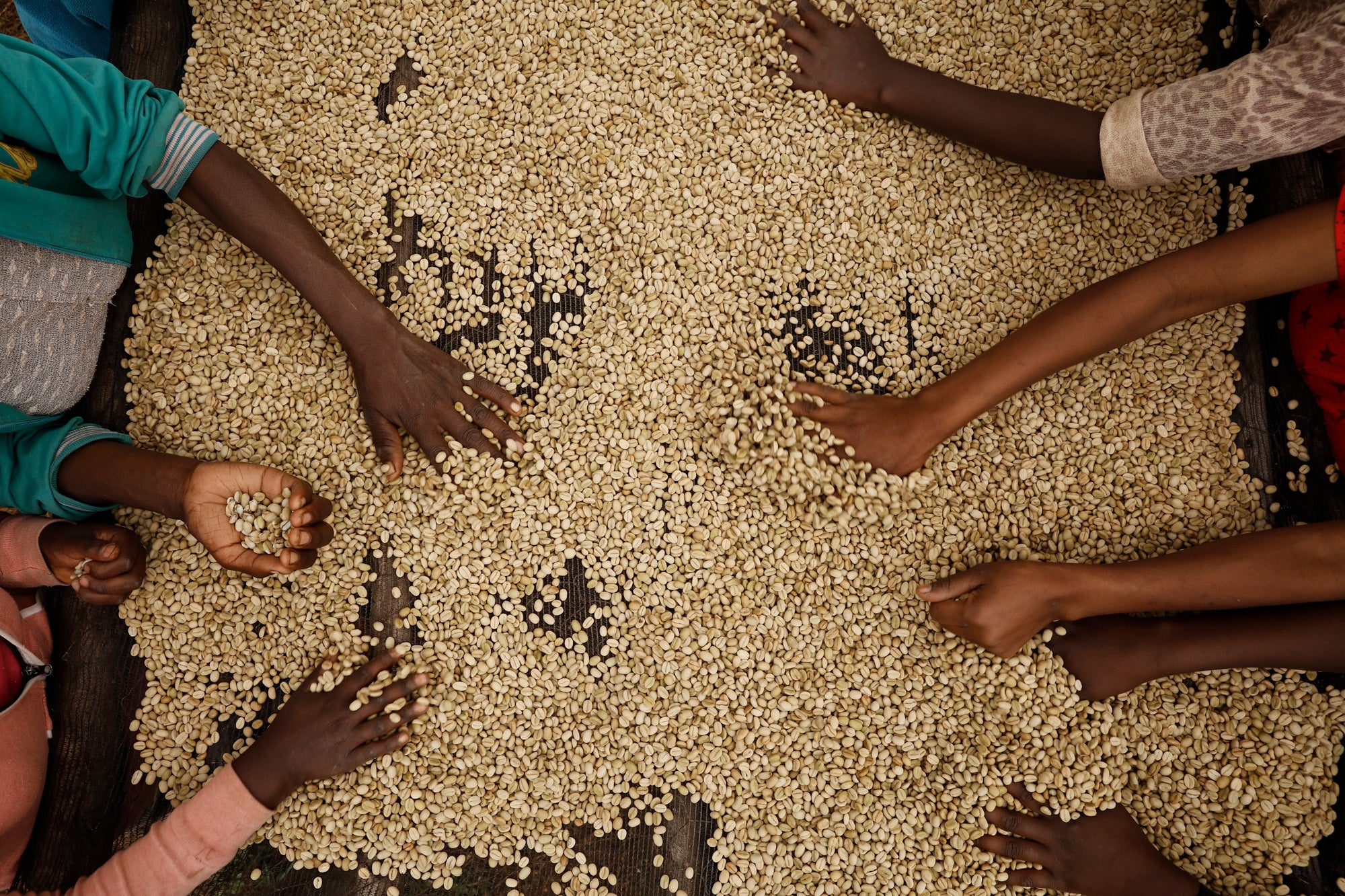Tips for the Coffee Roasting Championship
I represented Sweden in the World Coffee Roasting Championships last week in Rimini. Previous years I have placed second, third and fourth and there was no secret I wanted to bring home the gold to Sweden this time. I did not achieve that. A week after the competition, I am proud of my performance and that I gave myself the foundations to potentially do well in the World Coffee Roasting Championships.
I spent a lot of time preparing for the WCRC this year, in particular last few months. I practiced on the competition machine, studied green coffee defects, practiced the full run through to find the smoothest routine for screen sizing and I had read the rules a dozen times. In February the national competition is on in Sweden again. I will be in Central America at that time and will not compete this year. For those who are competing in the national competition or the World Coffee Roasting Championship this year I have written some tips from my experience from the competition.
The biggest challenges for me at the roasting competition
No one will go to the competition making the best roast they have ever done. The roaster is different, the set-up is different and your green coffee is not the green coffee that you have selected for your approach. But the set-up is fair, being the same to every competitor.
All of these factors combined make me take a slightly different approach to how I normally roast, all to achieve the taste profile I like:
- The Giesen W6 that we are roasting on in the competition is a very different roast to my Diedrich IR25.
- The brew ratio is 55g per litre (US standard) instead of 65 grams per litre (European standard)
- No opportunity to try the practice coffee from the practice time on the roaster
Here are some tips for competitors in the Coffee Roasting Championship this year
-
Roast for the taste profile you like
Do not think about the judges. You will roast the way you roast and believe in better than trying to make something different and good during a competition.
-
Practice green coffee grading
The competition results are often just a few points apart. Practice the defects, the Washed Arabica Green Coffee Defect Guide is pedagogical and an easy read.
-
Write a sketch and schedule for every single thing
Doing checklists for what you are going to do during your prep time, sample roasting and green grading keeps it watertight and efficient.
-
Practice on a the same machine before the competition
It takes theory but also hands-on practice to understand another machine then your own. You cannot roast in the same way on different machines and achieve the same taste profile. Make two training days or more, as with every production set up you need to try the different profiles before you can go back to the curves to improve them. Try to be ready for the competition with guideline for curves with different density and hardness.
-
Practice the Green Coffee Sorting full on before the competition
I divide the green grading into three stages
1. colour, odour, moister and density
2. screen size
3. defect sorting
Clock how long you need for the for stage one and stage two. The remaining is how long you will have for defect sorting. Use the timer on stage to keep track on the stages
-
Use gloves when you read moister
Do not rush the moisture and density. Read it 3-5 times where the sample is fully taken out and put back in the reader. Use gloves when doing the reading to not transfer any moisture from your hands to the beans.
-
Prepare paper for green grading
In the World Competition we were not allowed to use a prepared paper for grading defects. You are still able to bring blank paper. I took one minute of my competition time to paint squares on the paper to directly prepare defects.
-
Screen size flow
I used another squared paper I had pre stamped to put into the cupping trays for screen size. This way I could easily write the numbers <14 to 21 to be able to double with and keep the screen sizes in order and separated. A common question is how hard you should shake the trays; you can’t shake them hard enough as the correct screen size is the one it is. And to the ladies, use a sports-bra.
-
Organize, from practice to competition
I have worked a lot in a dropbox folder, collecting curves, questions I have asked the rules and regulation committee, cupping notes, previous scoresheets, research, rules and regulations, list of practices, painting up work flow... but as it is finally time to go to the competition it was important for me to get all the data I needed into physical folders (no1. in the picture). In the individual folders for the different stages of the competition I had all the checklists on things to bring on stage. My bible (no.3 in the picture) made it easy to me to collect all of my notes day by day. E.g. for the single origin I can start logging information already during the debrief, through notes on sample roasting, colour reading to cupping table and summarizing all I needed, before putting all in info into binder no1. As we sat down to write the roast plan I already had everything summarized in the book.
-
Defect sorting after the screen size
There are a lot of similar defects on the same size. It is also easier to see the defects when all beans are uniform in size.
-
Bring your own coffee to colour read at the competition
This will give you an indicator from what colour scale you are aiming for on the competition set up. The colour does not on its own tell you how developed the coffee is, but for the roast style you have chosen and the individual knowledge you hold.
- Bring your coach for the cupping and making roast plan
Write the flavour descriptors together or at least let your coach read it through. Even if you are used to writing flavour descriptors bear in mind those need to be easy to pick out, not too specific and should be taken from the descriptors from the SCA Flavour Wheel. The judges do not have the descriptors before taking their own notes and they have many cups on the table and will not look for the fine nuances as detailed as you will on your own coffee, when cupping dozens of coffees side by side.
-
Accept that this competition takes time
You have a lot of spare time, but you will also need a lot of time on site to prepare for the next category. You need to book four days off work and try to shut down emails and work tasks to a limited time of hours.
-
Bring a lighter to check the airflow
Get an idea about how strong the airflow is at the setting your planning, by using a lighter in front of the sample outlet. Compare the flame from your experience of the roasting machine you have practice on before the competition. As it is a temporarily set up and local whether changes, the airflow might also differ between the roasting days in the competition.
-
Bring a strong standing torch to see the defects clearer
This needs to be battery driven. The stronger light the easier you will see the defects.
-
Read the rules
Highlight. Take notes. Read them again and again.
-
Debrief
Based on the rules, write down everything you want to ask the head judge and organizer on one collected document. I built my list over the last 6 months, continuously finding potentials in the competition by reading the rules again and again. If you have questions you need to know beforehand you may email them to be able to prepare well. No roasting competition will have everything set fully fair or as planned, it takes many resources and hours, be open and plan for those changes as well as you can.
-
It is just you and the coffee
Looking at other competitors is not a good idea at the competition. Do your thing with the coffee and get to know it better. Zoom in, focus on what you know, and what you have prepared.
-
Cup and share thoughts with co-competitor
At the final cupping you will be able to share all your thoughts, curves and blend content. Be open and curious and take this opportunity to explore and learn. Only one person wins the competition, for all the time you have put into this make sure you take some great experiences and new perspectives out of it.

Good luck and remember to have fun!
Joanna Alm
Learn More
- Choosing a selection results in a full page refresh.
- Press the space key then arrow keys to make a selection.
